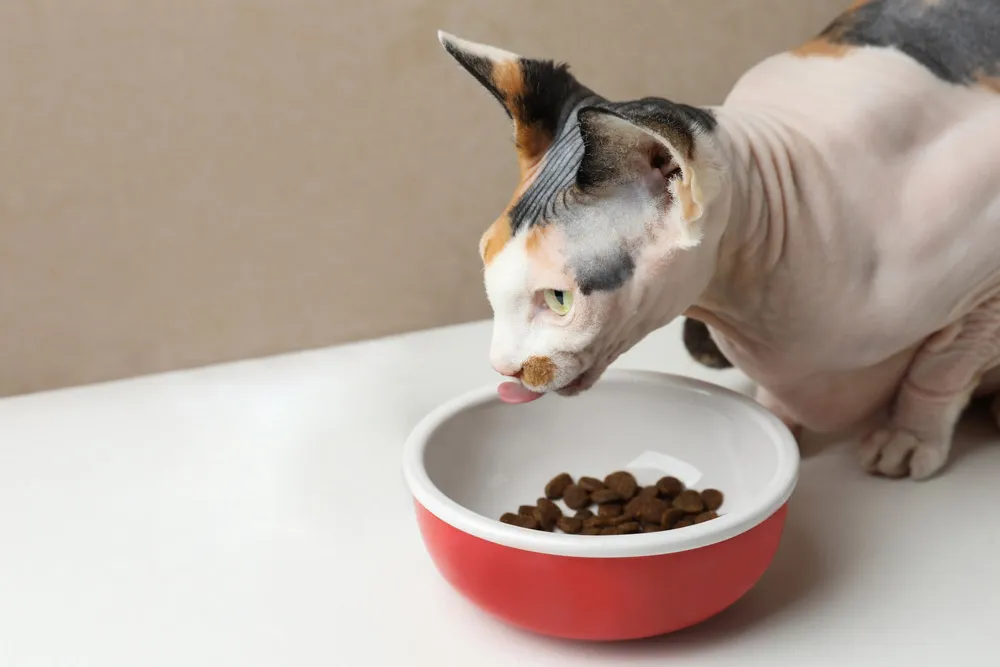Sphynx cats stand out with their furless bodies and high metabolism, burning calories faster to stay warm. This makes best foods for Sphynx cats a top priority for owners aiming to support their pet’s energy, skin health, and overall vitality. Choosing the right diet helps prevent common issues like dehydration or skin problems while keeping your hairless companion playful and strong.
 best foods for sphynx cats
best foods for sphynx cats
For insights into unique breeds like the himalayan ragdoll cat, explore our related guides on cat care variations.
Why Nutrition Matters Most for Sphynx Cats
Without fur for insulation, Sphynx cats rely heavily on a calorie-dense, nutrient-rich diet to regulate body temperature and fuel their active lifestyles. Veterinary experts from the American Animal Hospital Association emphasize that proper nutrition bolsters their immune system, promotes supple skin, and aids muscle maintenance. Poor diets can lead to obesity, digestive troubles, or exacerbated skin conditions, which affect up to 20% more Sphynx cats than furry breeds, according to breed-specific studies.
High-quality foods address these needs by delivering balanced macros and hydration support. Real-world experience from Sphynx breeders shows that tailored nutrition reduces vet visits by focusing on moisture and proteins early on.
Dry Food vs. Wet Food: What’s Ideal for Sphynx?
Sphynx owners often mix dry and wet foods for optimal benefits, balancing convenience with hydration. Both types have roles, but selection depends on your cat’s preferences and health profile.
Benefits and Drawbacks of Dry Kibble
Dry food offers practicality for busy owners, scraping teeth to combat tartar—a key perk since Sphynx cats are prone to dental buildup from softer diets. Premium kibbles boast 30-40% protein from sources like chicken or salmon, aligning with feline carnivore needs.
Pros:
- Long shelf life and portion control
- Dental abrasion for cleaner teeth
- Cost-effective for daily feeding
Cons:
- Lower moisture (around 10%), risking urinary issues if water intake is low
Always pair with fountains; vets recommend monitoring urine output for early dehydration signs.
To compare with elegant patterns, see our post on the tuxedo ragdoll cat.
Advantages of Wet Food for Hydration
Wet food shines for Sphynx due to 75-85% moisture content, mimicking natural prey and preventing kidney strain common in hairless breeds. It’s often more enticing, ensuring picky eaters get vital fats and taurine.
Pros:
- Boosts daily fluid intake naturally
- Palatable textures with whole meat chunks
- Supports skin oil production
Cons:
- Requires refrigeration post-opening
- Potentially pricier per serving
 Sphynx cat eating kibble from feeding bowl
Sphynx cat eating kibble from feeding bowl
Studies from the Journal of Feline Medicine highlight wet diets lowering chronic kidney disease risk by 30% in dehydrated-prone cats.
Key Nutrients Every Sphynx Diet Needs
A top Sphynx formula prioritizes these essentials, verified by WSAVA-compliant brands.
High-Quality Protein Sources
Aim for 40%+ protein from animal origins—chicken, turkey, or fish—to match their rapid metabolism. Deficiencies cause lethargy; excess lean muscle thrives.
Essential Fats for Skin and Energy
Omega-3s and -6s from fish oil combat dryness, reducing flakes by 50% per dermatology reports. These fats sustain warmth without weight gain.
Controlled Carbs and Fillers
Limit grains; opt for veggies like peas for fiber. Avoid corn/wheat to prevent allergies affecting 15% of Sphynx.
Vitamins, Minerals, and Taurine
Vitamin E shields exposed skin; taurine prevents heart issues. AAFCO standards ensure completeness.
For hydration hacks, check hydration needs in breeds like the colorpoint ragdoll.
Optimal Feeding Schedule for Sphynx Cats
Feed 3-4 small meals daily to stabilize energy. Sample routine:
- Breakfast: Wet paté for hydration kickstart.
- Midday: Measured kibble snack.
- Dinner: Wet with toppers like broth.
- Free-feed: Dry available, refreshed twice daily.
Adjust for age—kittens need 200-300 kcal/day; adults 250-350. Track weight monthly with your vet.
Explore sleek varieties in our modern siamese cat article.
Top Recommended Brands for Sphynx Nutrition
Vet-endorsed picks include:
- Hill’s Science Diet: Science-backed for skin/digestion.
- Royal Canin Sphynx Formula: Breed-specific with omega boosts.
- Blue Buffalo Wilderness: Grain-free, high-protein wild prey mimic.
Transition slowly over 7-10 days: 25/75 mix escalating to full new food. Watch for loose stools; probiotics help.
Detailed patterns await in the tortie point siamese.
Smooth Transition Tips to New Foods
Sudden switches upset stomachs—gradual mixing prevents diarrhea. Monitor appetite; if off, revert and consult a vet. Personalized plans from feline nutritionists enhance success.
Final Thoughts on Sphynx Cat Diets
Prioritizing best foods for Sphynx cats ensures thriving health through protein-packed, hydrating meals. Balance dry and wet, focus on quality nutrients, and follow vet guidance for breed-specific tweaks. Your Sphynx will reward you with boundless energy and silky skin.
Ready for more? Dive into our breed spotlights like the himalayan ragdoll cat for broader cat care wisdom. Consult your veterinarian before diet changes.
